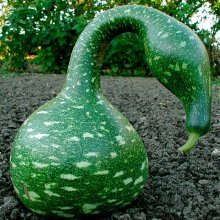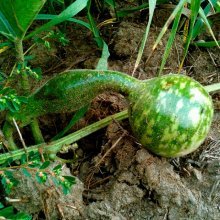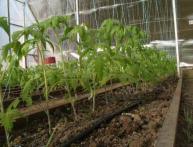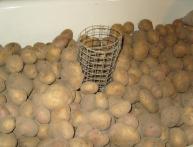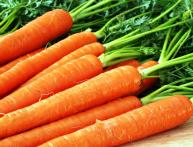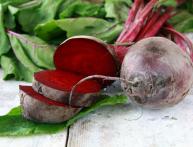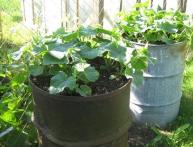Growing and using bottle gourd
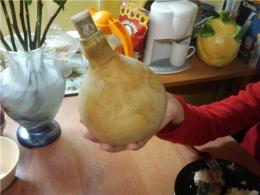
Bottle gourd, or lagenaria, came to us from Africa. Until now, in many countries, various counterfeits are made from it; in addition, it has many healing properties.
Content:
What is a bottle gourd?
Calabash has the scientific name lagenaria. It appeared in ancient times and was immediately cultivated by man. People can hear several other names, for example, “Vietnamese zucchini” or “dish pumpkin”, “gourd” and even “Indian cucumber”.
Lagenaria belongs to the Pumpkin family. In total, there are approximately 7 species of such herbaceous vines in the genus. It is believed that the birthplace of lagenaria is Africa; after its discovery, it began to be actively grown in Central Europe; this happened even before the discovery of America.
Although bottle gourd has beneficial properties, it is rarely used as food; it is more valued as a raw material for making dishes. Archaeologists were able to find evidence that lagenaria was used more than 12 thousand years ago. It is still used for these purposes in Africa, South America, China and India.
Lagenaria fruits are light, they are even lighter when dried, the peel does not allow water to pass through, and the seeds can be used for planting for a long time.Under natural conditions, lagenaria grows in tropical climates, but thanks to gardeners, this plant has appeared in our country. The stem of the bottle gourd has the appearance of a vine, reaching a length of more than 15 meters.
The fruits are large, elongated, can be more round, oval or pear-shaped. The fruit can stretch from tens of centimeters to 2 meters in length and from 10 cm in diameter.
Each bush grows from 10 to 15 fruits, each weighing from 0.5 to 1.5 kg.
The pumpkin stem is faceted and covered with fluff. The leaves are pentagonal in shape, the surface is corrugated. Before fruiting, the plant is covered with individual small white flowers. You can only see them at night; during the day they are closed. The flowers are located in the axils of the leaves.
Using Lagenaria
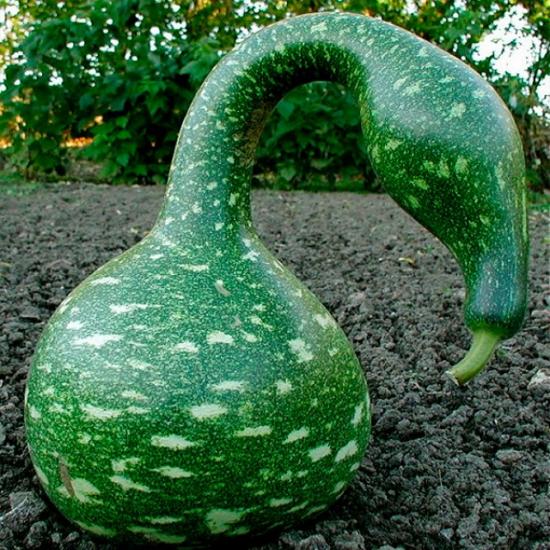
Pumpkin is made from:
- dishes
- smoking pipes
- musical instruments
- toys
To give the pumpkin a certain shape, its ovaries are placed in wooden molds. The stems are used to weave hats and baskets. The seeds are subsequently used to extract edible oil. Only young fruits that have reached a length of no more than half a meter can be eaten. The taste of lagenaria is soft, notes of spice and bitterness are felt.
Lagenaria is rich in vitamin B and contains 4% sugars. The fruit also contains:
- coarse fiber
- proteins
- vitamin C, B, PP, A
- potassium, calcium, sodium, iron
The fruits of bottle gourd are used in folk medicine and have healing properties. The pulp is used for diseases of the cardiovascular system and stomach problems, for diseases of the liver, kidneys and bladder. For these purposes, young fruits or petioles are used.
Lagenaria is a dietary product, which is why it helps to get rid of extra pounds.Its regular use can normalize metabolic and digestive processes.
To use lagenaria in folk medicine, lotions, infusions and ointments are made from it. Eating the seeds can remove worms from the body. Modern research has shown that lagenaria contains some substances that slow down the growth of cancerous tumors. Ascorbic acid, which is part of lagenaria, strengthens the immune system, helps the body resist infections and viruses, it is a kind of natural antioxidant.
Growing bottle gourd
Lagenaria grows very quickly, if oh provide the right conditions and care. If you want to get fruits, then you will have to pollinate the plant manually, and do it at night, since the flowers open only in the dark.
It is best to plant the vine in areas where there is no wind or drafts. The plant came to us from the tropics, so it likes warm temperatures. To protect lagenaria from the wind, plant it near the walls of the house or solid fences.
To get a full-fledged bottle gourd, you buy seedlings, although you can also get a vine through seeds. To do this, they are soaked and then grown in pots. The seed shell is dense, so they are pre-soaked for two days in warm water (water temperature 30-35 degrees). This procedure can be bypassed by cutting off the top of the seed before sowing. When planting, the seeds are planted to a depth of 3 cm and covered with film.
Seedlings will be grown from seeds in about a month, after which they can be transplanted to a permanent place on the site.Seedlings are planted in early summer; a distance of 1 meter is maintained between seedlings, since the plant grows widely and will require a lot of space. As the alagenaria grows, it is provided with strong supports.
Lagenaria is not particularly prone to infection by parasites and diseases. In rare cases, it will be attacked by the cucumber mosaic virus, anthracnose or powdery mildew, this depends on the natural conditions of the growing region. The soil is selected to be rich in organic matter, with well-organized drainage and neutral pH. To prepare the soil yourself, you will need the following ratio: 2 parts turf soil, 1 part humus and 1 part sand, here you can add charcoal, ash, superfostat.
Feeding is carried out every 10 days. Organic and mineral fertilizers are used. When the main shoots grow more than 4 meters, they can be pinched. When the plant will begin to bloom, female flowers will need to be pollinated. To pollinate one female flower you will need pollen from 3 male flowers.
Harvesting takes place 3 months after planting; this must be done before the onset of cold weather. Bottle gourd fruits do not rot if a piece is cut off from them and left for further growth on the vine.
How to dry bottle gourd at home
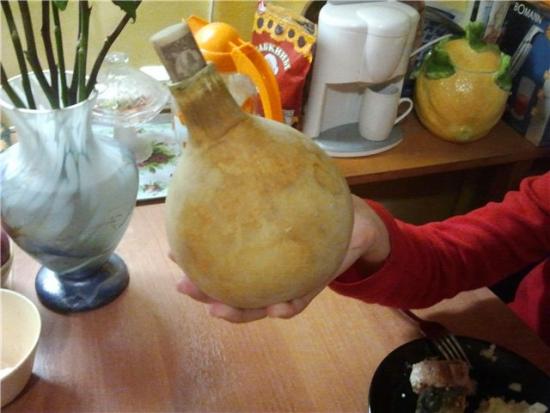
If the pumpkin was grown specifically for making dishes or other products, then it must be dried properly. When the pumpkin is drying, it needs to be provided with air access from all sides, so it is either hung or placed on a lattice surface.
Lagenaria is dried in the fresh air. You can tell that the process is over by the sound of the seeds inside. If you don’t have access to a garden plot, you can dry it indoors.To do this, the fruit is cut from the branch, leaving only the tail through which the moisture will evaporate. There should be good air circulation in the room and no direct sunlight. Under no circumstances should you dry pumpkin in the oven or microwave.
The first stage is peeling pumpkin from dirt and dust; to do this, wash it with soapy water and wipe dry with a towel. Now it is moved to a well-ventilated room for a week, during which time the upper part of the pumpkin should become harder and it will slightly change color.
Now the lagenaria is sent to a dark room, where it will lie for about six months. The fruits should not touch each other; air should pass under each of them. Every day the fruits need to be checked in order to remove the bad ones in time, that is, those that have begun to rot or wrinkle. You can remove mold with a dry cloth; it is not dangerous.
Every week the pumpkin needs to be turned over to avoid dents, rot, and just to ensure even drying. The drying process is complete when the seeds begin to rattle. After this, you need to cut off the top part, remove the seeds and leave it in this form for a few more days so that the inside part dries out. Now the bottle gourd can be painted, decorated, polished, etc.
A fake bottle gourd is suitable not only for decorating your own home, but will also be an excellent gift for friends and family. Growing it even on your own balcony is not difficult.
Video about growing bottle gourd:
Interesting information about the vegetable garden

